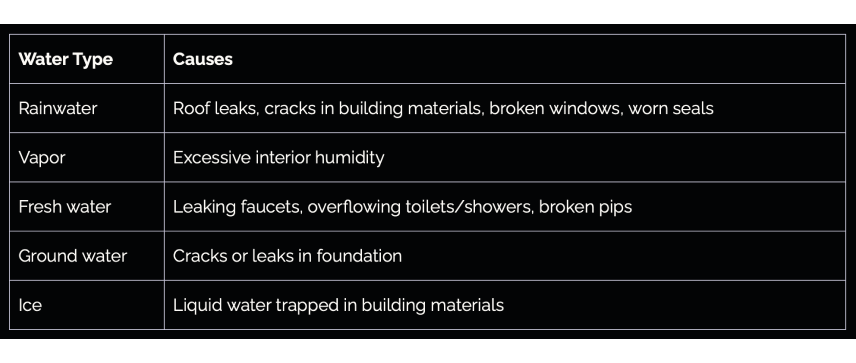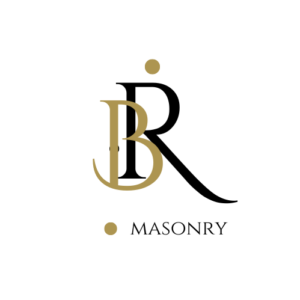Guardian Inspect checks the entirety of your commercial property’s exterior for water damage. Small cracks, holes or other exterior deformities can lead to costly damages down the line. Routine inspection is your best prevention.
Once moisture enters a building, it will cause rot, mold, erosion, and other damage to both the interior and exterior. Water most often enters buildings through cracks or breaks in windows, masonry, or other exterior materials. Interior plumbing failures can also lead to exterior damage from the inside out.
Understanding Moisture and Its Impact
Often we think of heavy rains, floods or internal plumbing failures when someone says “moisture damage”. Humidity, steam, ice, and snow also cause damage to commercial structure, and are important parts of any discussion on moisture damage. Moisture easily seeps into gaps and soaks into porous building materials, causing wood rot, corrosion of metal components, and the breakdown of insulation materials.
Common Causes of Water Damage

In addition to costly repairs, failure to identify and mitigate these concerns can lead to long-lasting and severe health consequences for building tenants. Moisture damage leads to mold, which is a significant cause of respiratory illness. Faulty building materials, such as leaky roofs and cracked walls, leads to drafts and allows pests to enter the building. Swift identification and mitigation of these concerns is a legal necessity to comply with local, state, and Federal regulations on commercial structures.
Efflorescence: The Telltale Sign of Moisture
Efflorescence is a deposit of salt left behind as water moves or evaporates. It appears as a white powder that coats surfaces, and it indicates certain moisture issues within a building. Efflorescence is similar in appearance to limescale left inside dishwashers or coffee makers from hard water.
One common cause of efflorescence is water seeping into building materials like masonry and concrete. As it moves, it removes natural salt found within the material and redistributes it. While unsightly, efflorescence is an important warning sign that water is damaging your building’s structure.
Preventing Moisture Issues and Efflorescence
Guardian Inspect recommends several proactive measures that commercial property owners can take to mitigate these issues:
Regular Inspections
Investing in regular inspections conducted by professionals like Guardian Inspect is your primary line of defense against moisture damage. Our team specializes in identifying the early signs of water intrusion. We assess areas prone to moisture infiltration, including basements, crawlspaces, roofs, and building envelopes.
Routine exterior inspections alert you to problems before they are too large to easily mitigate. These inspections will also ensure the health and welfare of your tenants, compliance with applicable laws, and peace of mind for other stakeholders.
Routine Maintenance
Routine maintenance of your commercial building addresses minor problems before they cause significant damage. In addition to regular inspections, routine maintenance offers another avenue to detect and ultimately mitigate easily corrected issues.
Your building’s maintenance routine should include things like scheduled service to major systems such as water heaters and furnaces; window and brick cleaning; fire systems and other security measures. By having skilled, licensed professionals provide these essential services at regular intervals, you’re more likely to detect small problems that occur between your regular inspections.
For example, your monthly window washer may alert you that window seals need to be replaced. Your HVAC technician may warn that there is more moisture present than there should be. Guardian Inspect recommends working with professionals who specialize in commercial structures, understand the warning signs of moisture damage, and will proactively provide feedback.
Proper Ventilation
Since moisture doesn’t just mean liquid water, proper ventilation is crucial in preventing many common moisture problems. Inadequate ventilation will cause interior humidity to rise to damaging levels, resulting in mold, mildew, damaged drywall, rusty fixtures, and even cracked glass. Ultimately, this will result in interior damage and health hazards for your building’s occupants.
Guardian Inspect can provide recommendations to improve and maintain proper mechanical and natural ventilation. Mechanical ventilation, such as exhaust fans and air exchange systems, can effectively remove moisture-laden air from enclosed spaces. Natural ventilation, achieved through well-placed windows and vents, allows for the flow of fresh air, helping to maintain a healthy balance between indoor and outdoor conditions.
Waterproofing
You can add an extra layer of defense by applying waterproof coatings in vulnerable areas. These specialized coatings repel water that would otherwise seep into building materials, which keeps interior moisture levels down and extends the life of your building. Waterproof coatings are most effective in areas where moisture infiltration is common, such as below-grade spaces like basements and foundations. If your building is prone to excess moisture, it may be helpful to apply the coating to other areas.
Guardian Inspect can provide guidance on the most suitable waterproofing solutions for your property. We assess the specific vulnerabilities and requirements of your commercial building and recommend an action plan for a comprehensive moisture barrier.
Drainage Solutions
Proper drainage solutions are an absolute necessity for comprehensive moisture mitigation in your building. When water is allowed to pool around the foundation or infiltrate the building envelope, it can lead to a host of moisture-related problems such as structural damage and mold growth. Drainage solutions play a pivotal role in mitigating these risks.
Guardian Inspect can guide you through the implementation of a multifaceted approach to drainage management. This includes ensuring that gutters and downspouts are clear and functioning correctly to channel rainwater away from the foundation. Your property should be graded to encourage water to flow away from the building, rather than towards it.
Related
Our Business Partner
BR Masonry, your trusted partner in masonry restoration and repair services throughout Ohio. With years of experience and a dedicated team of experts, we specialize in bringing precision and longevity to your masonry needs. Whether it’s preserving historical integrity or providing modern updates, our mission is to deliver unmatched quality and customer satisfaction.

